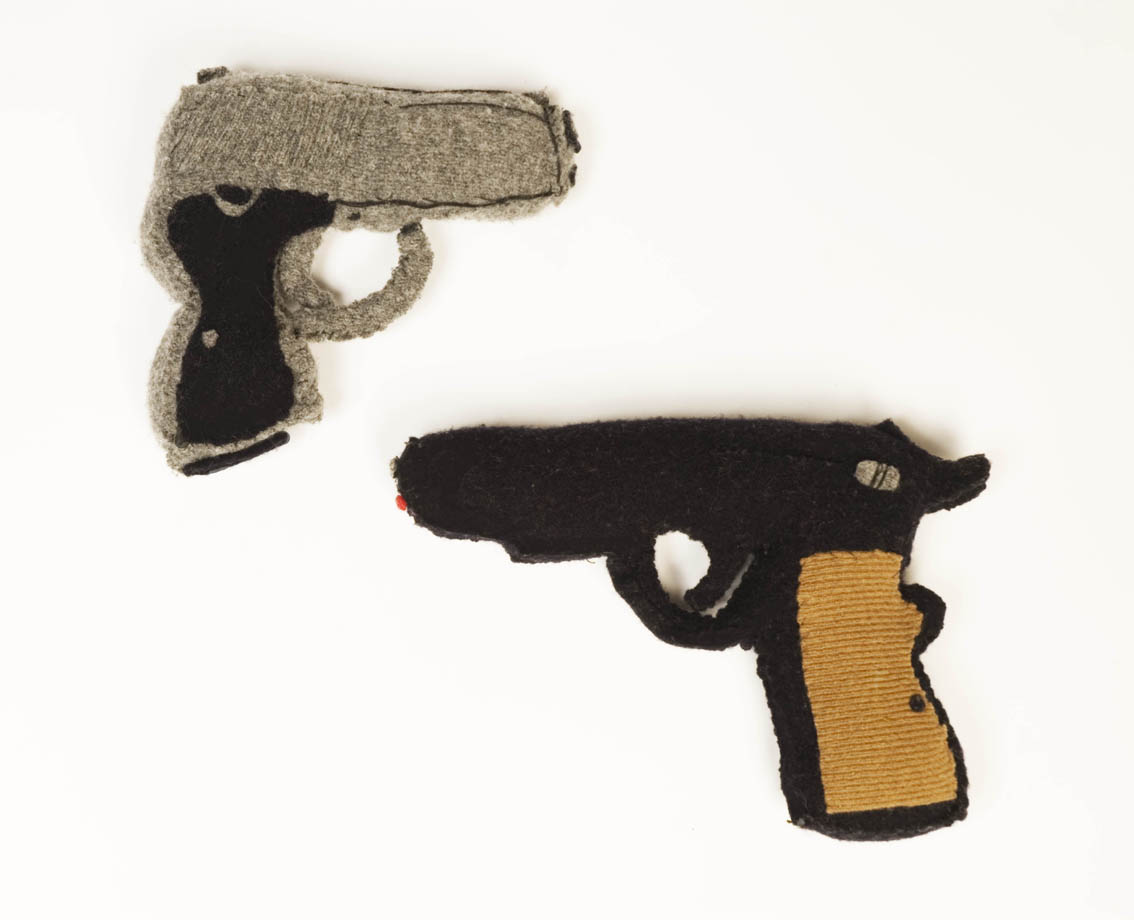Erzsébet Tatai: The new Physiologus
To avoid the forced categorizing of Kati Glaser’s work as hip textile sculpture, we had better establish that – though they are made of textile and are sewn – they are very remote from the family of puppets and cuddly toys, and are equally far from the mythical heroism of experimental textile. While many aspects of her works recall the child’s world, it is only the material itself that connects them to toys. These objects are just as much small sculptures as they are toys: it is their use that makes them one or the other, art work or toy. For Kati Glaser’s works are more than your average textile figure: her dog can give birth to puppies, of course in the manner of old-fashioned rag dolls, with the help of needlework; the innards of her deer, the portraits of the Hungarian poet Sándor Petőfi and his wife Júlia Szendrei, watching each other from the corner of their eyes, can be turned into the stressful relationship of a polar bear and a seal.
The fact that Kati Glaser, as an animator, gives life to her rag dolls, is in itself not so surprising; however, the unexpected turns, the unhindered wittiness captures our attention permanently. Glaser‘s humour is akin to Niki de Saint Phalle’s, only with an added element of grotesqueness, like some of the fabric sculptures of Louise Bougeoise. Her works are about life (love, birth, cultural and art history) or capture scenes from “everyday life,” and have silly descriptive titles that imply a certain naturalism contradicting the formal qualities of the sculptures. Although they are, functionally speaking, accurately made and the forms have the right character, they are at the same time stylized and purposely clumsy. In this way they distance themselves not only from their theme but also from the (often pseudo-)naturalistic detail of contemporary dolls. … Through these life-inspired works everything becomes funny, parodistic. This can be put down to the fact that Kati Glaser’s inventiveness is rooted in cultural history, and that she ridicules our habits. The soft guns make macho bravado ridiculous. The Pig killing game is amusing as are the sculpture groups like Daxhound with nudists and Boney M – the third girl is in the lavatory, because they help to face ourselves and laugh at ourselves. Kati Glaser deconstructs some of the myths of our modern age through the figure of the artist genius (Paul Cézanne, T-rex of painting), and she does not spare ancient themes either (Struggling centaur). The possibility of turning some of these sculpture inside out is of course important metaphorically, but the elementary experience of surprise is just as important. For in it the “truth” is just as emphatic as is “de-heroising unjustness” and playfulness. Kati Glaser’s creatures, hybrids of animals and humans generate knowledge and meaning, as did once the words of the Greek Physiologus: “If you place hair of a deer or make smoke with its bones in your house, you will never smell or find any trace of the dragon … So the Physiologus did not speak of the deer in vain.”
